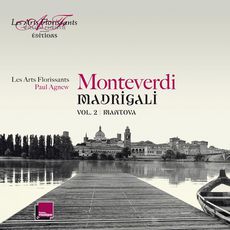We all know what a madrigal is, don’t we? Creatures somehow being ‘merry-minded’, fa-la-la, Merrie England and all that. A jolly part-song suitable for singing at home by competent amateurs. And for readers of Kingsley Amis’s Lucky Jim, the catalyst for an excruciating moment of barely averted social crash-and-burn for its main character. To anyone who remembers that episode, the very word ‘madrigal’ may be enough to induce a wince. But there’s more to the madrigal than all that. Its history may be essentially restricted to little more than a hundred years, primarily in Italy – but it occupied the talents of some of the finest composers of the age.
The derivation of the word is a mystery, and although there were pieces called madrigals in the 14th century, the form as we understand it today – a secular vocal composition in several parts, mixing counterpoint with melody and perhaps a touch of enlivening rhythm to distinguish it from more sober sacred music, all combining to communicate a secular poetic text – first appeared in Italy around 1530. Its earliest masters, however, were composers from northern Europe – Verdelot, Arcadelt and Willaert who worked in Venice and Rome. In their hands the madrigal became, by mid-century, a dominant form in Italy.
Success led to experiments in chromaticism, which brought a more intensely emotional mode of expression, as demonstrated by Cipriano de Rore, who used jarring dissonances and jagged themes as well as more symbolic tone-painting devices such as ascending or descending scales, higher or lower registers, to illuminate the text. At the same time there were lighter, often pastoral-flavoured madrigals by, say, Andrea Gabrieli and (at first) Marenzio; it was this type that captured the imaginations of imitating English madrigalists such as Weelkes, Morley and Wilbye.
Create a free account to keep reading




